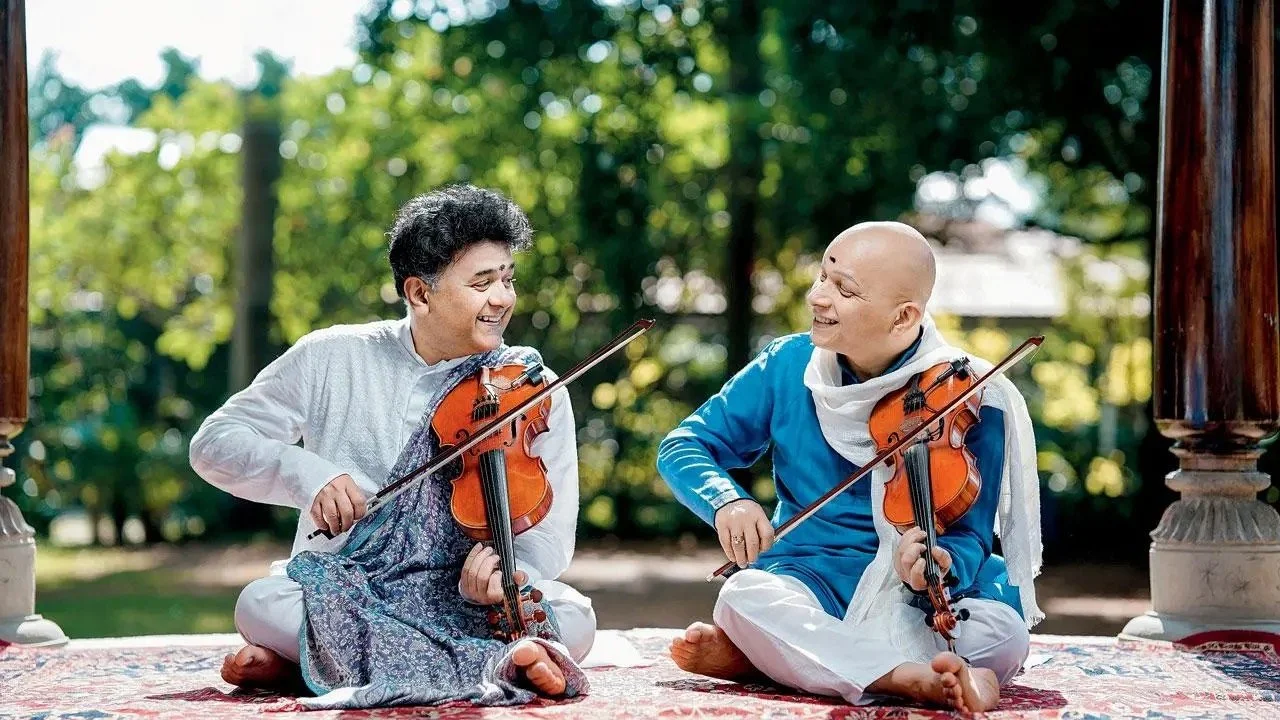The Historic Rise of Indian Violin
Far from the ornate concert halls and cathedrals of Western Europe, the emergence of violin as a prominent voice of Indian classical music has increased dramatically in recent decades. Prior to 1800, violins were either absent or a rare oddity. Today, a steadily increasing portion of performances and recordings include the violin as an integral voice. The previously unconsidered violin, to its current centerpiece in Indian music culture, signifies the journey of an ancient, south asian violin ancestor, its evolution to western music and eventual repatriation to its homeland of India.
Ravanahatha
Ancestor of the violin.
How did the violin, with its traditional European origins from 16th century Italian makers and composers, emerge as prominent mainstay in Indian classical music over the past 200 hundred years? It turns out that it may be the other way around. The distinctly European violin as we know it has much older origins. Bowed instruments were first used in India around 2,000 years ago, with a previous iterations dating as far back as 5000 B.C. An instrument known as the ravanahatha is widely considered to be the prototypical proof of concept for violin as we know it today.
Rubab - 7th century CE Persia
Rebec - 13th to 16th century Europe
Later instruments such as the rubab and the rebec date to 7th century Persia, India and Afganistan. They migrated north through Spain, Italy and France via trade routes, migration and conquests. Over the next 1,000 years, these imports transformed through the ages. Andrea Amati popularized the violin in Cremona during the mid 16th century with his functional, elegant design. Makers like Stradivari and Guarneri furthered Amati’s concepts and officially put the violin on the map. These instruments were highly sought after by everyone from street artists to royal families. This new subcontinent descendant, began its repatriation journey to India in the early 1800s, when Carnatic musician Baluswami Dikshitar learned to play the Western violin and adapted it for Indian music.
Indian classical music, emerged from 12th century traditions and came of age during the 17th - 19th century. Over the time it gradually developed in two distinct styles: Carnatic from the south and Hindustani from the north. Carnatic music derived from ancient Hindu texts and traditions such as the Samaveda. It is distinguished by its focus on compositions, particularly the three part “kriti form”, which was developed between the 14th and 20th centuries. 19th century composers like Tyagaraja, Muthuswami Dikshitar, and Syama Sastri, collectively referred to as the Trinity or Three Jewels of Carnatic music, helped canonize it as a refined artistic discipline.
Ganesh &
Kumaresh Rajogopalan
Highly acclaimed Carnatic violin brothers have performed over four decades. Their father was also a talented violinist and teacher.
North Indian Hindustani music departs from Carnatic music due its geographic proximity to Turkish, Arab, and Persian influences. However, it posesses common DNA to Carnatic as a result of its mutual, southern origins. Hindustani is more improvisational than Carnatic music due to a less strict adherence to form, melody and rhythm. One may venture to say it is more jazz-like in approach in that performer is also part composer The western analogy would be to the music of Vivaldi and Bach, both contemporaries with common origins, but with distinguishable aesthetic principles due to culture, language and geography. Vivaldi left open sections in many of his compositions for more advanced players to extemporize as they please.
Ravi Shakar - Sitar
(7 April 1920 – 11 December 2012)
Monterey International Pop Festival
The violin’s Indian permeation may also be attributed to expats with thriving music communities in Europe, America and beyond. This combined with a growing appetite for global music contributes to cultural convergences that have catapulted the role of Indian violin in recent decades. Dating back to the 1960’s, artists like George Harrison of the Beatles, Micky Hart of the Grateful Dead and Jazz Giant John Coltrane, were not only enthusiasts but active promoters of Indian music to western audiences. The sounds of sitars gradually made their way into Western Pop Culture as a result, culminating in Ravi Shankar’s iconic performance at the 1967 Monterey Pop Festival.
Yehudi Menuhin
(22 April 1916 – 12 March 1999)
British violinist had musical partnership with Ravi Shankar
One of the greatest violinists of the 20th century, Yehudi Menuhin developed a musical relationship with Shankar when he and his wife, Diana, visited India in 1952. Menuhin fell in love with Delhi's vibrant, enchanting atmosphere and described Shankar as a profound human being, musician and friend. Shankar appreciated Menuhin's humility and eagerness to learn about Indian music, contrasting it with the often ego-driven nature of Western musicians. Their relationship flourished over the ensuing decades culminating in historic musical collaborations. They released the album “West Meets East” the same year as the Monterey Pop Festival of 1967.
Praveen Sheolikar
Born in 1964 in a family of reputed musicians, started learning music at the age of 9. He received the coveted National Talent Search Scholarship and a gold medal in AIR's All India Akashwani Music Competition.
Today, Indian violin is not only commonplace in Carnatic music, but has also become popularized among North Hindustani musicians. Since the violin was adopted into Hindustani music in the early 20th century, many new violinists have emerged and captivated global audiences with their unique, improvisational style. Both Carnatic and Hindustani violin lessons are now available globally online or from various schools of music in India, Europe, America and beyond. It may just be the fastest growing violin community in the world. One day, perhaps sooner than you think, you may have to clarify which classical violin you are talking about, Western or Eastern.






